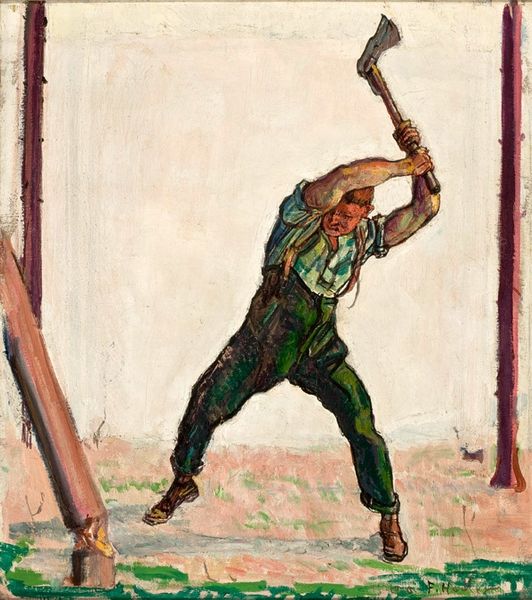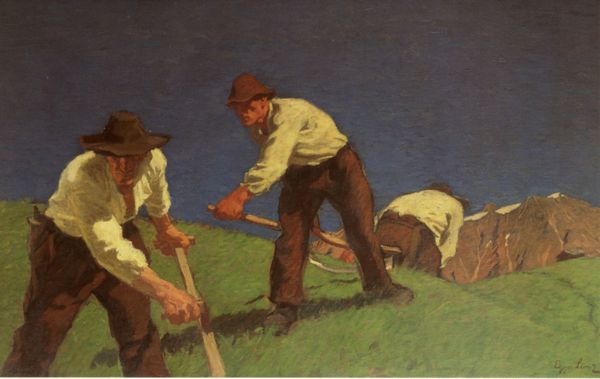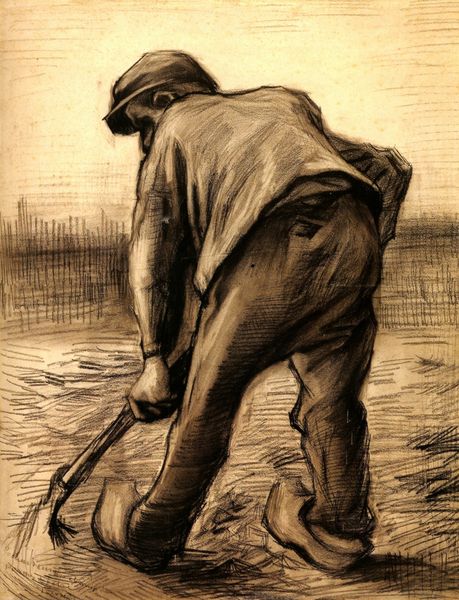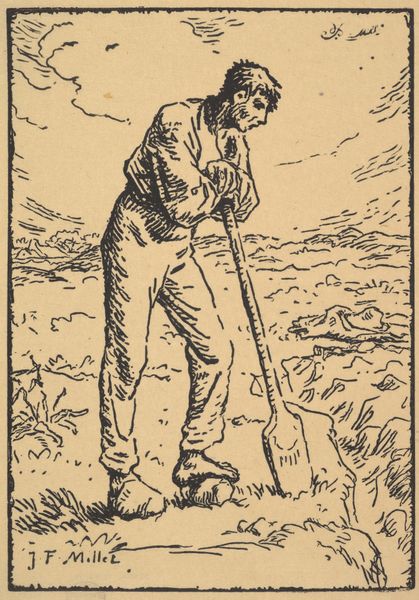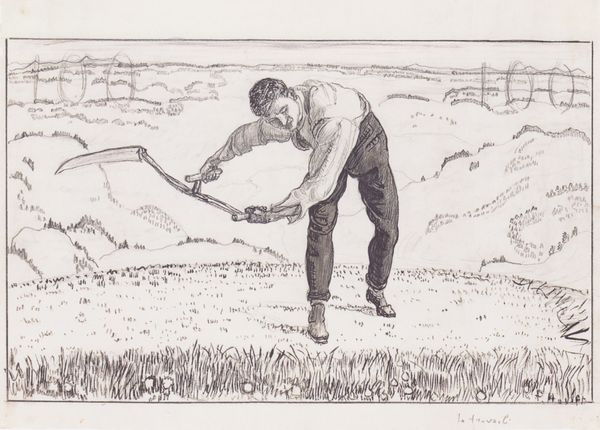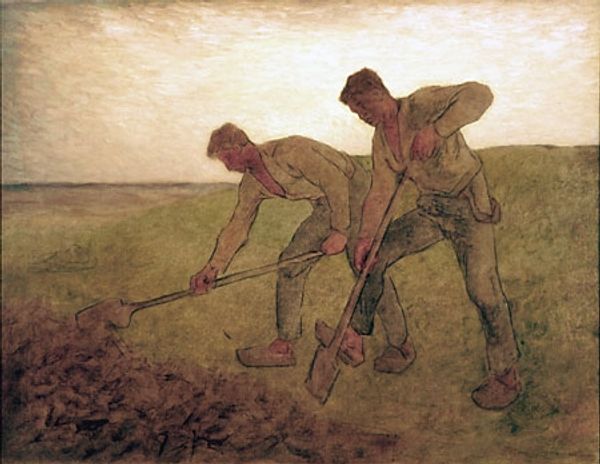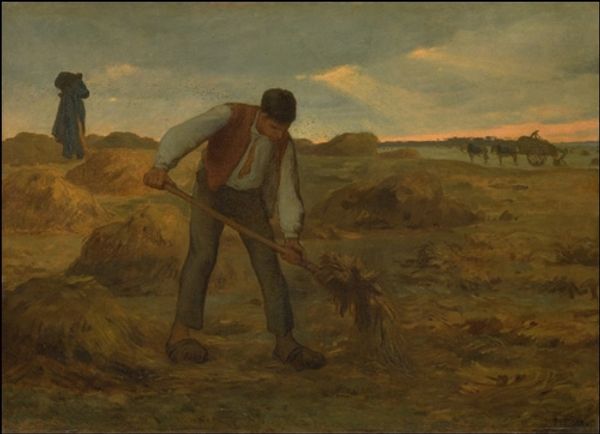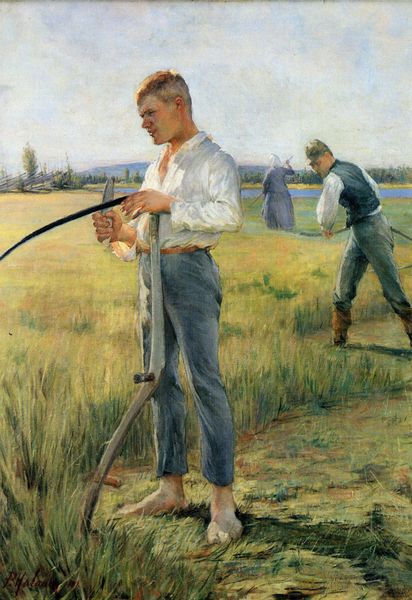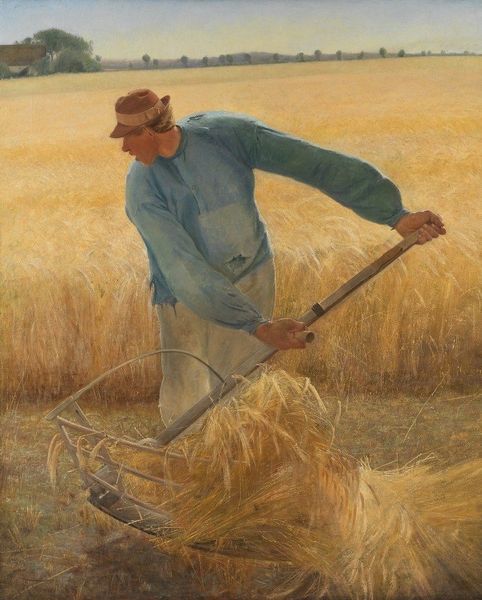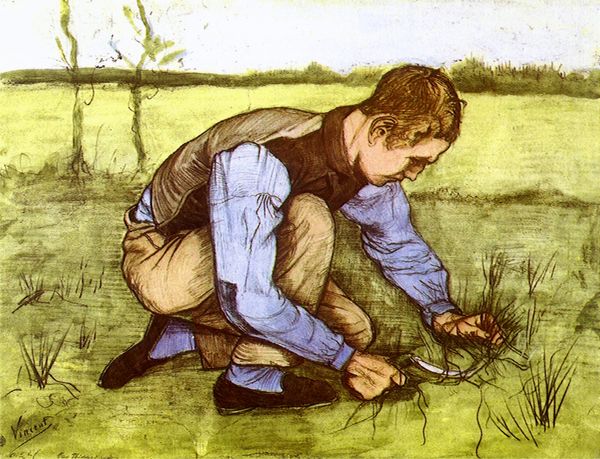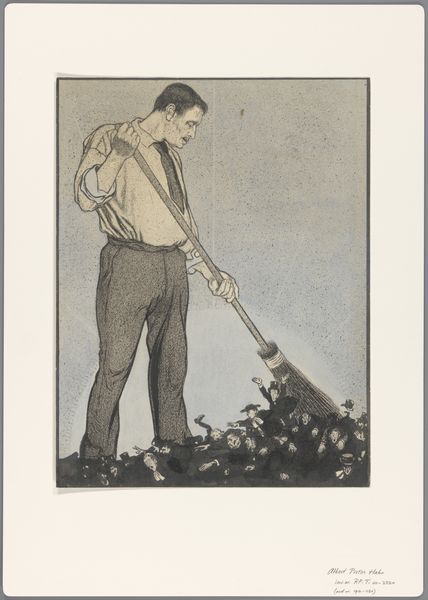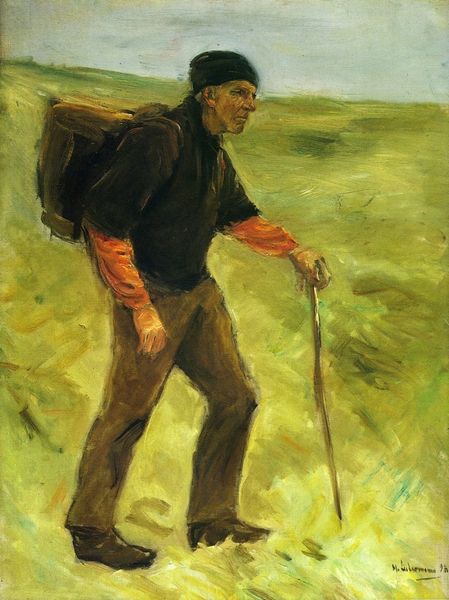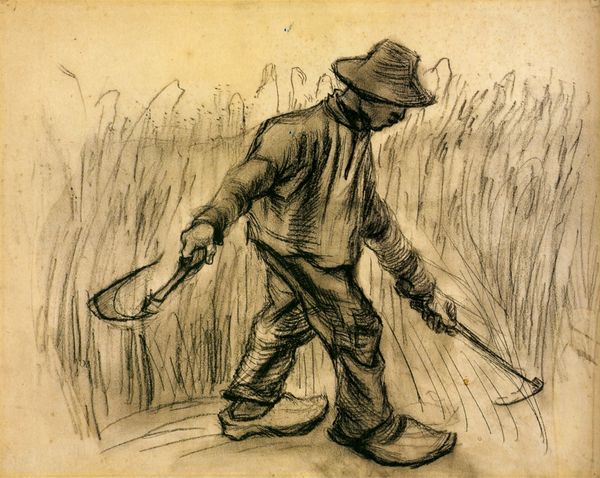
Dimensions: 83 x 105 cm
Copyright: Public domain
Curator: What a compelling piece. We're looking at Ferdinand Hodler's "The Reaper," an oil on canvas painting from 1910. Editor: Yes, it's deceptively simple. I'm struck by the rawness of the application, how immediate it feels, despite the deliberate composition. Look at the build-up of impasto, particularly in the foreground. You can almost feel the texture of the cut grass. Curator: It's interesting you note that material presence because Hodler, steeped in Symbolism and responding to Post-Impressionism, was interested in the monumental figure and timeless archetypes. The reaper, as a figure, represents so much. He's a bringer of harvest, but inevitably evokes Death. Editor: Absolutely. And the painting really pushes you to consider the process. Hodler’s use of visible brushstrokes disrupts the traditional art of painting. The labor becomes visible, both within the scene itself, and how he applies paint. The act of creation is put on display, just as the reaper’s work is. Curator: He flattens the perspective, almost echoing medieval depictions of the Grim Reaper himself. The subject is transformed into a symbol, abstracted and loaded with cultural significance. His back is bent, head downturned, laboring in the sun – his every movement speaks of his toil. Hodler’s rhythmic application really heightens the somber reading here, almost giving us an allegorical take. Editor: Agreed, and notice how this simplification actually directs us back to those immediate processes. This isn’t academic precision; it is about the action, the toil. We can really appreciate both its making and how he depicts the hard work of rural existence. It pulls the reaper down from just pure abstraction to the immediate struggles of daily life, I find that the beauty of it. Curator: The figure definitely encapsulates the heavy, endless cycle of life and death, particularly within the frame of labor. His repetitive action is very poignant. I appreciate how Hodler transforms a commonplace figure into something with lasting psychological and spiritual weight. Editor: And I how he invites you to consider the raw materials, the making, and the reality of labor behind our existence. The painting embodies the relationship between the hand that tills and the ground that provides.
Comments
No comments
Be the first to comment and join the conversation on the ultimate creative platform.
